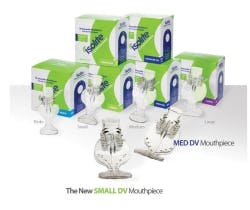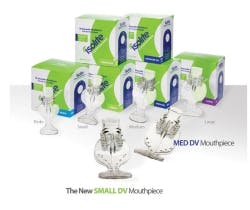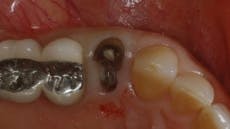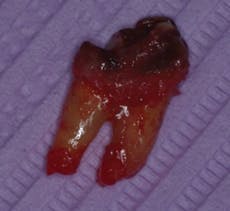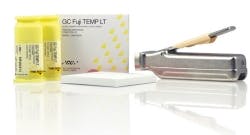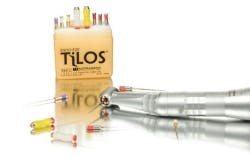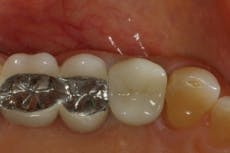A Simple, Economic, and Profitable Rationale for Extracting Teeth
by Ara Nazarian, DDS, DICOI
Fig. 1 — Physics Forceps schematic
Today, we see more and more patients presenting with teeth that have failed due to fracture, recurrent caries, or periodontal problems. In the past, the common dental treatment would be to extract the tooth without grafting and prepare the adjacent teeth for a three unit bridge. However, with implant therapy gaining more and more popularity among patients and providers, the request to have implant treatment has increased. It is my opinion that implant tooth replacement is the standard of care and every dental provider needs to learn how to replace missing teeth using this modality at some level. However, without setting the foundation for implants with atraumatic extractions and grafting, implant placement can be more complicated. Because of this, it is essential for dental providers to accomplish simple to complex extractions in a systematic, efficient, and effective manner.
With over 20 million teeth needing extractions each year in North America, more and more general dentists can increase their practice potential and serve their patients by performing the extraction themselves. The problem is, most general dentists do not find extracting teeth to be rewarding because of the unpredictability, and one broken root tip can ruin the entire day.
Today, we have an instrument that makes extractions easier, less traumatic and more predictable. The Physics Forceps (Golden Dental Solutions) act simply like a class I lever, where only one force is applied with the beak on the lingual aspect of the tooth or root (Figure 1). Once the beak is placed, the bumper is placed on the alveolar ridge at the approximate location of the mucogingival junction to balance the beak. The beak grasps the tooth, while the bumper is the fulcrum to provide leverage and stability for the beak and wrist movement. Once the instrument is properly placed, pressure is slowly applied using only wrist movement. During this holding period, the internal force or “creep” will build up, allowing the bone to slowly expand and the periodontal ligament to release, at which point the tooth will disengage from its socket (known as the “pop”). Once the tooth has disengaged from the socket, the instrument has completed its task and another instrument of choice can be utilized to remove the tooth.
In the example shown in the photos, a patient presented with a severely broken down maxillary right first premolar tooth (No. 5) (Figure 2). Utilizing the Physics Forceps (Golden Dental Solutions), we atraumatically extracted the bifurcated remainder of this tooth (Figure 3) and curetted the socket. Once cleaned, bone grafting material (Foundation, J. Morita or Bioplant, Kerr Dental) was placed into the socket and sutured (Figure 4) to prevent any dislodgement.
Fig. 2 — Nonrestorable tooth (4138)
Approximately 12 weeks after healing, the area was inspected (Figure 5) and a new radiograph was taken to visualize the underlying bone. There was adequate width and height to place an implant that would replicate the premolar.
Fig. 3 — Atraumatic extraction of tooth (4150)
When the patient returned three to four months later, the healing cap was removed and impressions taken. Following the necessary lab procedures, the dental implant was restored with the final abutment and crown in place (Figure 6).
Fig. 4 — Placement of grafting (4151)
Fig. 5 — Healed ridge (5894)
The patient was very excited with the end result and was pleased to have all the services (extraction, grafting, dental implant, abutment, and restoration) performed at one location. Today, patients like to get all their services under one roof. With the growing need for extractions, dental providers can provide not only a valuable service for their patients, but also an increased revenue potential for their practices.
Fig. 6 — Implant, abutment, crown (8466)
Ara Nazarian, DDS, DICOI, is in private practice in Troy, Michigan, with an emphasis on comprehensive and restorative care. He has conducted lectures and hands-on workshops on esthetic materials and dental implants throughout the United States, Europe, New Zealand, and Australia. Dr. Nazarian can be reached by email at [email protected].
Past DE Issues
